Adaptation and innovation in lab intensive engineering courses

 Enlarge
Enlarge
When all classes at the University of Michigan were switched to remote due to COVID-19 in mid-March 2020, hardest hit were courses that relied heavily on lab work – courses like many in the electrical and computer engineering curriculum. Within a few months, it became clear that with COVID-19 raging on, the next academic year would not be back to normal.
This is the story of how three different courses were redesigned to survive the pandemic. Some courses will have been forever changed as faculty discovered new ways of teaching that worked well for students.
Flipping the classroom and moving to remote labs
Analog Circuits is a junior-level undergraduate course that covers single-transistor amplifier design and analysis of circuits commonly used in wireless radios, audio amplifiers, and several other interface applications. Prof. Michael Flynn was slated to teach it for the third time in the Fall of 2020, but knew that things had to change.
“There was no way to teach it in the standard way,” said Flynn of this lab-intensive course.
Flynn began talking to colleagues at Michigan and other institutions, and decided on a flipped approach, where students prepare in advance of a lecture, and at least some of the class time is reserved for working on problems and applying what they learned.
Not wanting to simply record a 90 minute lecture, which would Flynn said would be “mind-blowingly boring,” he prepared three self-contained videos.
“Because I was completely rearchitecting the labs,” said Flynn, “I could make the labs fit in much better with the content because I had more control over the content delivery. Everything was planned so carefully – it had to or the wheels would fall off.”
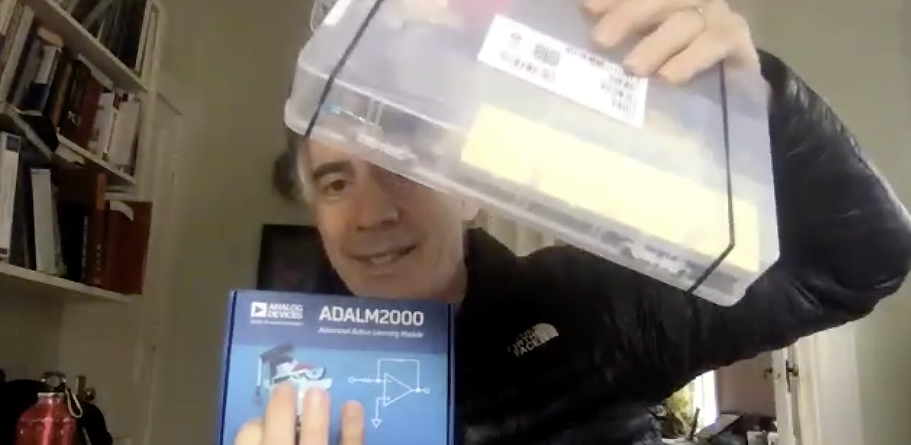
 Enlarge
Enlarge
Flynn reached out to his contacts at Analog Devices for lab kits that mimicked the state-of-the-art tools they would normally find on campus.
“I was fedexing boxes out all over the world,” said Flynn.
The course content was stripped down to essential material only, and the labs were completely rewritten with the help of three graduate students.
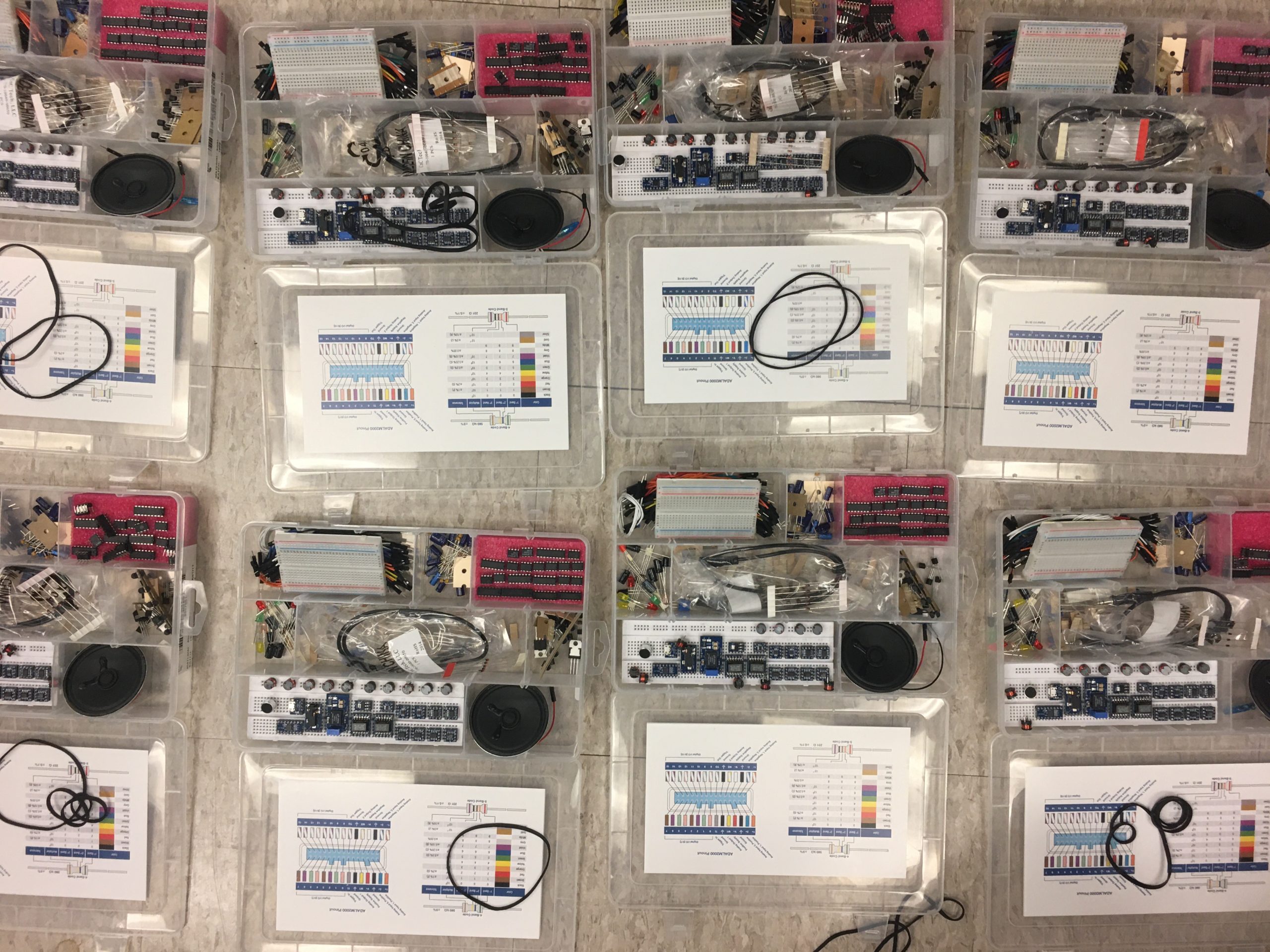
 Enlarge
Enlarge
His efforts paid off. The students said the labs were ‘hard, but really good.’ And Flynn received his best teaching evaluations ever: 4.9 out of 5.0.
Would Flynn consider continuing any of his new teaching techniques post-COVID?
“Yeah, totally. The lab kits are the way to go,” said Flynn. “The students appreciate the chance to do stuff themselves rather than being scheduled in the traditional lab. And the quality of the equipment is very good.”
But he’d want to bring back the team work that was lost with remote teaching.
Flynn even mused about packaging the videos, labs, and a slimmed down textbook for his revised version of the course – a possibility that actually excited the students.
Keeping students engaged in a large introductory EE lab course
Analog Circuits was just one of several courses in electrical and computer engineering that turned to take-home lab kits to give students hands-on lab experience at home.
Faculty in charge of four different undergraduate courses, including three large introductory courses in electrical and computer engineering (with individual enrollments of 100-230 students), went the same route. Each of these courses is normally taught in labs outfitted with industry-standard equipment, with teams of students sitting at each station. These faculty determined that the Analog Discovery 2 (AD2) kit by Digilent would serve well as a core component for a take-home lab kit.
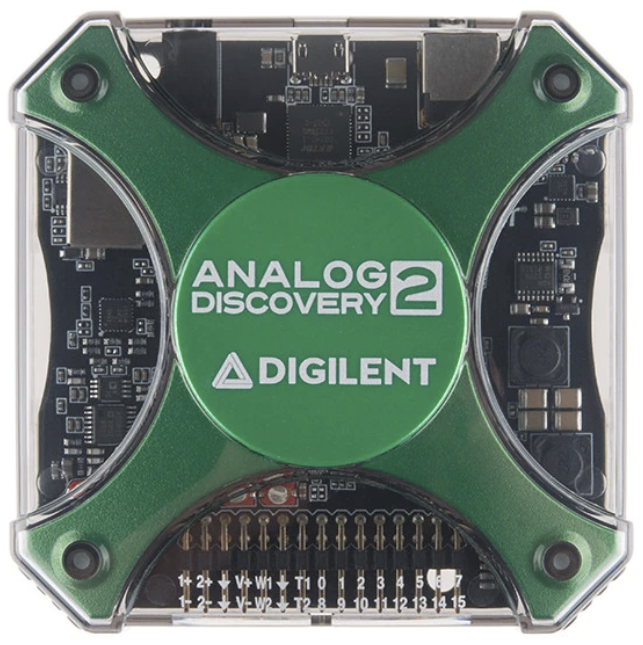
 Enlarge
Enlarge
During the 2020-21 academic year, more than 1,000 of these kits, along with additional devices and parts, were distributed to students still on campus, or mailed to those remaining at home. Home included states across the United States, as well as foreign countries, including China, Armenia, Korea, Israel, Thailand, United Arab Emirates, Bosnia and Herzegovina, and India.
One of the courses using the AD2 was EECS 314: Electrical Circuits, Systems, and Applications, taught by Dr. Alexander Ganago.
EECS 314 has typical enrollments ranging between 175-210 students. It is an introductory course to electrical engineering for non majors, and similar to the sophomore level course, Introduction to Electronic Circuits, which is required for all undergraduate electrical engineering and computer engineering majors.
The AD2 was a hit according to end of semester surveys. One student wrote, “The AD2 is an incredible device. I have quite a bit of lab experience from internships, and everything that was crammed inside that thing was very impressive.”

 Enlarge
Enlarge
To keep students on track and help ensure their success, Ganago incentivized completion of the labs, made sure the newly created lab manuals were crystal clear and designed for more individualized student work, and required attendance at the weekly zoom meetings for approval of their lab results and guidance as needed.
Still, there’s no way to replicate a live classroom experience with one that is remote, and it takes more student effort to complete courses.
“Remote learning requires more responsibility from individual students,” said Ganago, “because they may be lacking the instructors’ presence, peer support and teamwork.”

 Enlarge
Enlarge
Fortunately, the challenge of solo work was met by most all of the students, and even pushed them to learn the material more deeply.
For example, this statement by an anonymous student echoes what other faculty heard from students in their own classes:
“If the labs had been in person what would have most likely happened is that I would have been in a group with at least one person with lots of knowledge on circuits and they would have been in a hurry to do the lab as quickly as they could (way faster than I could understand) and I wouldn’t learn anything.”
“The use of portable instruments in every student’s hands may revolutionize the teaching,” said Ganago, even after all students have returned to the classroom. Having their own kits allows students to more closely associate theory with practice, rather than waiting for tightly scheduled lab times. Students could also do preliminary experiments with their kits prior to more advanced measurements with the industry-standard equipment available in the labs.
Teamwork in a hybrid course
Experience working with lab partners in teams is core to the ECE curriculum, yet one of the most difficult experiences to provide during the pandemic. Even for courses that were hybrid, meaning a combination of in person and online learning, the 8 ft. distance required between individuals and limited lab space seemed to negate the ability to work in teams.
Nevertheless, Prof. Jim Freudenberg wanted students taking EECS 461: Embedded Control Systems to both come to the lab, and work in teams.
EECS 461 is a class that trains students to work in the multidisciplinary area of embedded control software development. The lab for the course is built around a haptic wheel, which is a mechanical device that allows a human to interact with the computer algorithm through the sense of touch.
“This is a hands-on lab using industrial-strength hardware, and that’s why students love it,” said Prof. Jim Freudenberg, who has been teaching the course for more than 20 years.
There’s simply no way to mimic this setup at home – so Freudenberg, Dr. Jeffrey Cook, and their team of student instructors began planning how to make it work with strict safety protocols in place.
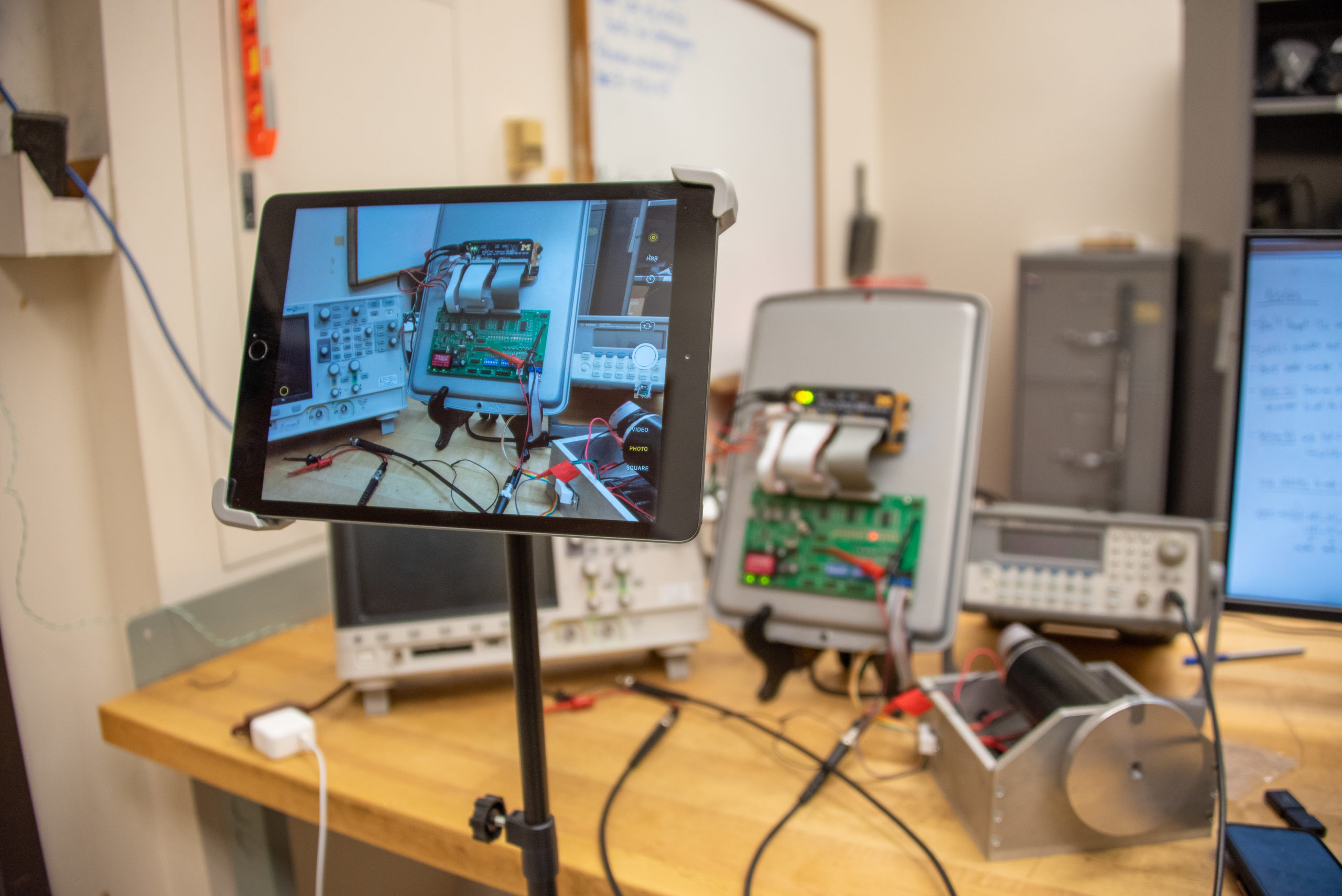
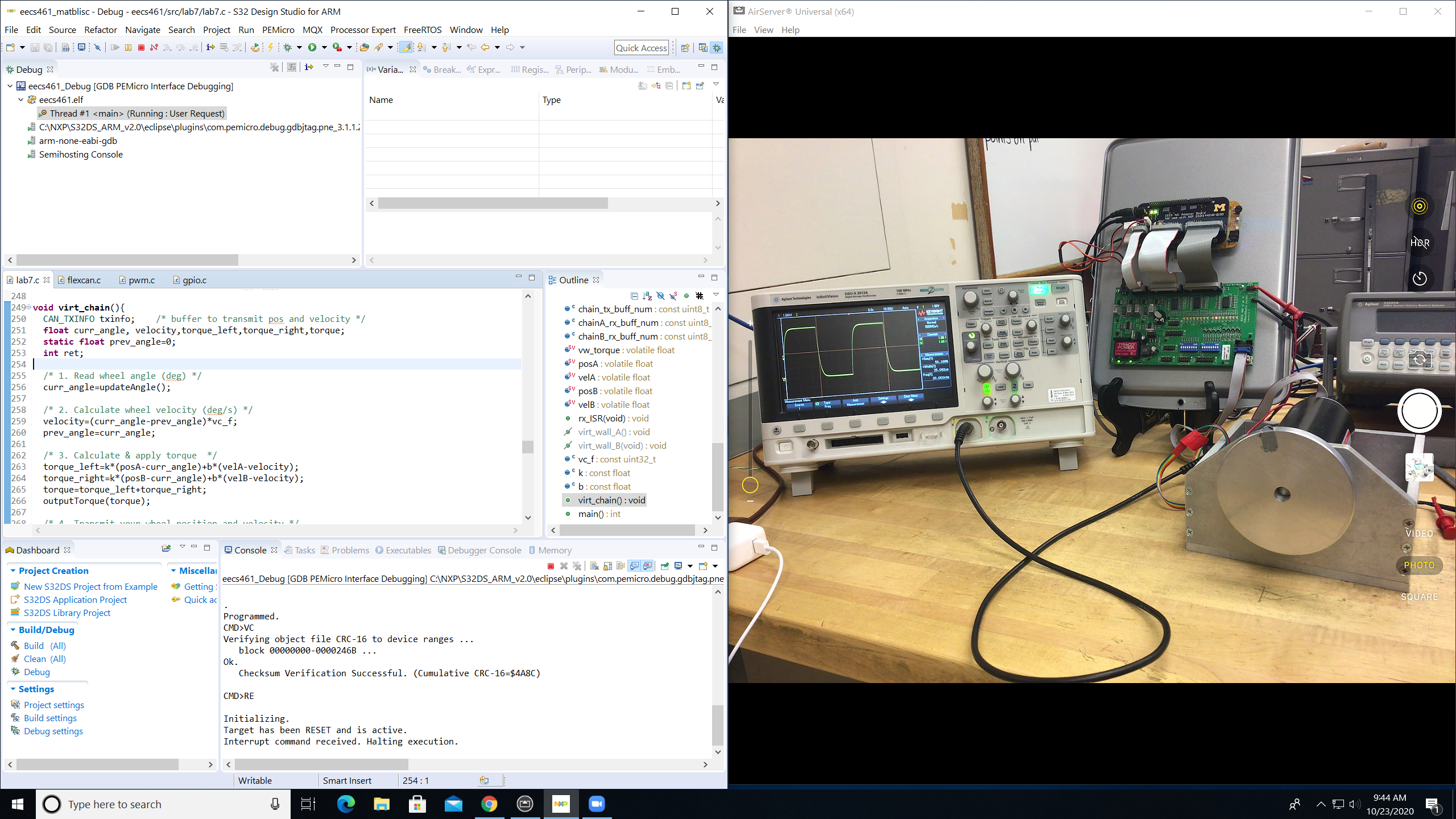
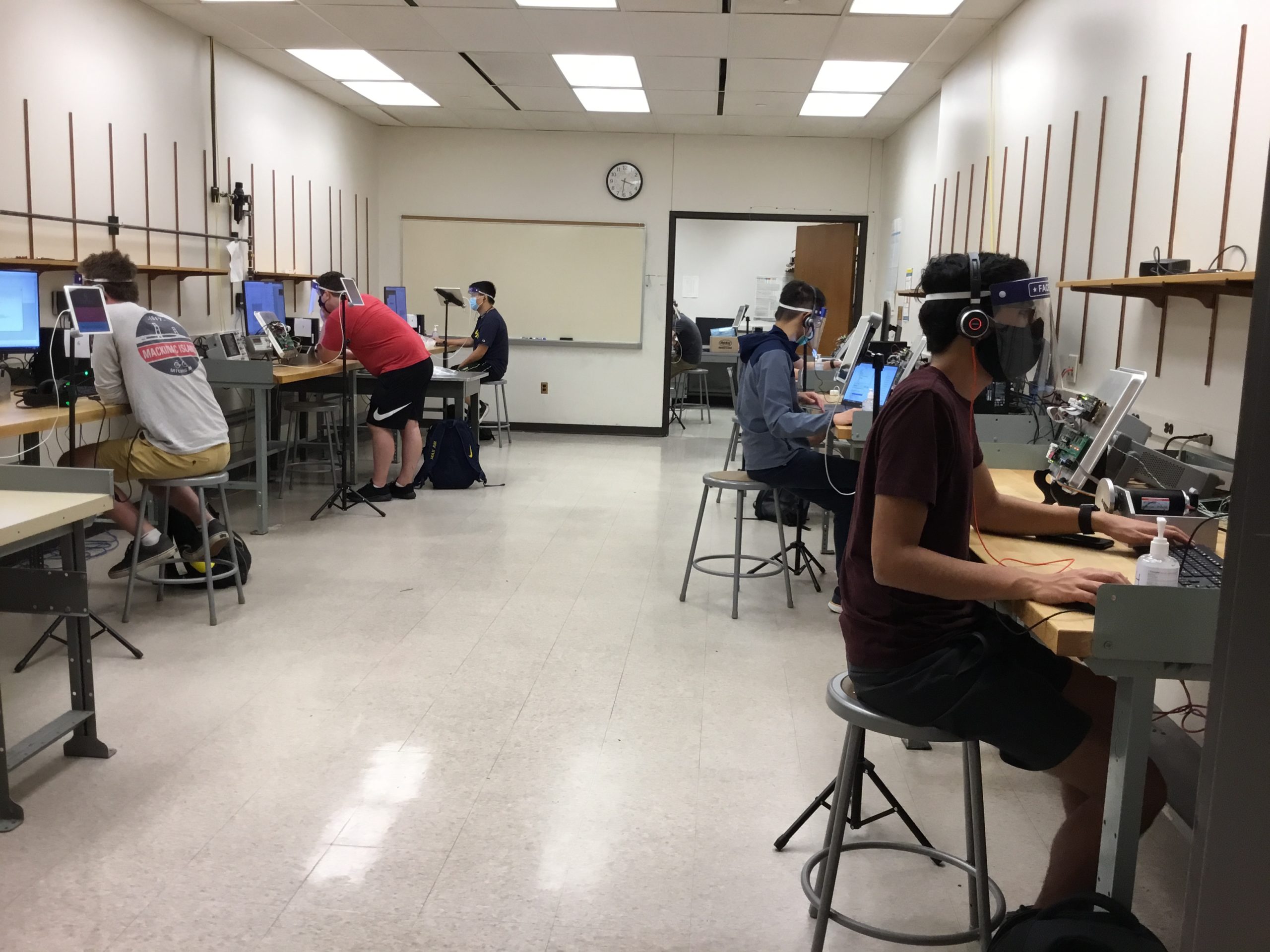
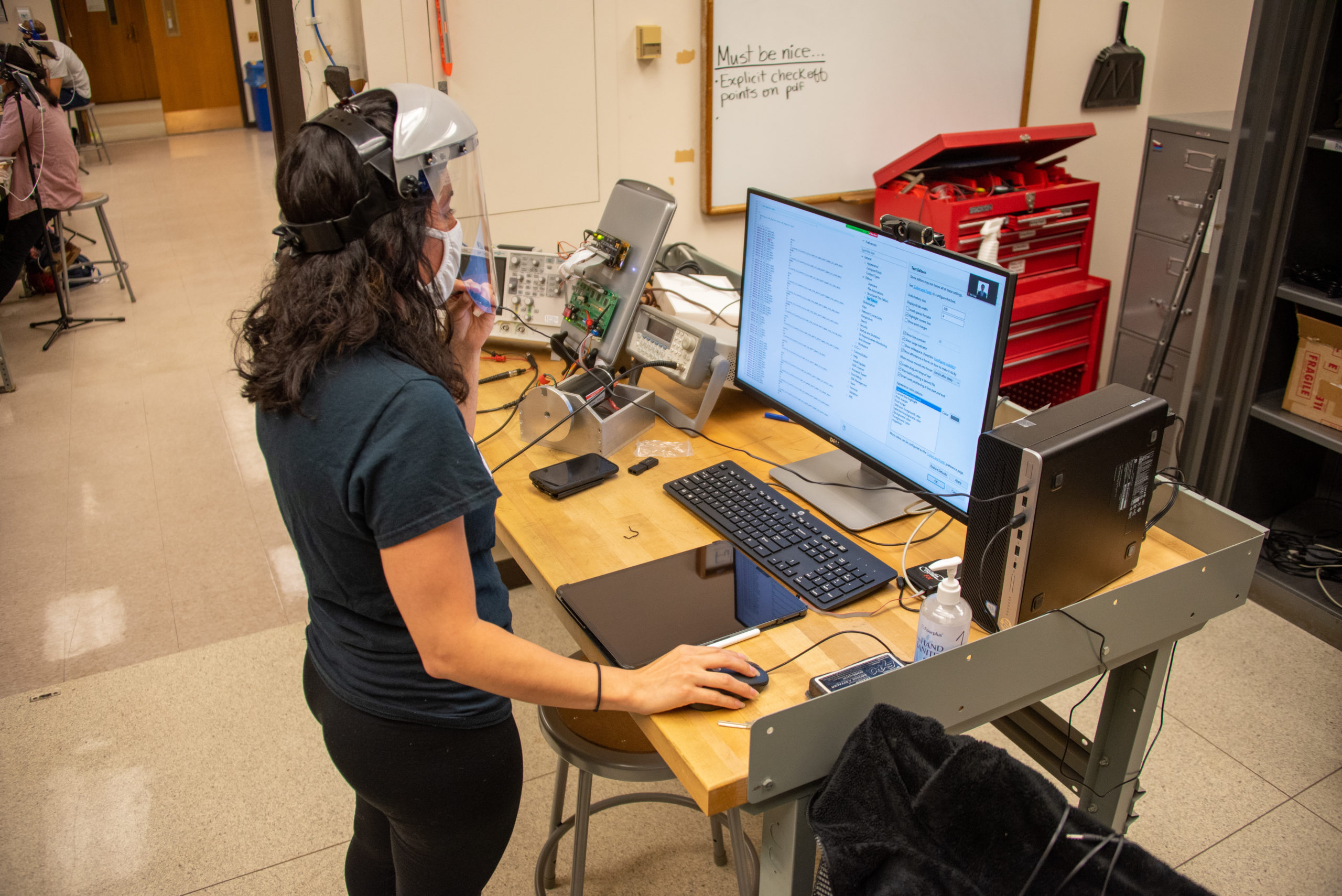
“They were all super heroes,” said Freudenberg of the graduate and undergraduate students who helped transition the lab to hybrid learning.
In the new hybrid scenario, one member of the two-person team would be in the lab one week, and their partner the next, communicating remotely with iPads and other equipment to facilitate remote learning.
Michelle Gehner took the course as an undergraduate student when COVID-19 shut down the University last year, and then transitioned to becoming an undergraduate instructor for the course.
“I really admire the way that the course instructors changed the course to be adapted for a hybrid environment,” said Gehner, whose eyes lit up as she recalled the benefits of being in the lab. “Even for me, being an IA, this was my only in-person course.”
Freudenberg brought the course to ETH Zürich in 2008 at their request, and is now helping them adapt to the pandemic in Switzerland using the successful practices created at Michigan.
He believes that this setup is a model that could be used in industry to facilitate collaboration between people in remote locations, so that an engineer telecommuting to work, for example, could work with an onsite engineer to develop embedded software.
Lessons Learned
There was no one size fits all approach to redesigning the ECE curriculum for online learning. Some courses introduced take-home lab kits, or offered hybrid learning solutions. Still others resorted to novel solutions that relied on software to mimic electronic devices and equipment (examples found in this article). Those without a major lab component went completely online, and focused their energy on student engagement and new ways of presentation and evaluation of the subject material (read more about how this was accomplished in the graduate course Matrix Methods for Signal Processing, Data Analysis, & Machine Learning).
Many faculty plan to incorporate their creative solutions to student learning into future courses.
However, one point seems particularly glaring, and that is how important the actual physical setting, the bricks and mortar, are to higher education in engineering.
Colleges and universities don’t simply provide the lab space through their facilities, they provide faculty and the student teaching assistants which are essential to providing quality education. They provide a space to work together to find solutions. And they provide the opportunity to build relationships that often last a lifetime.